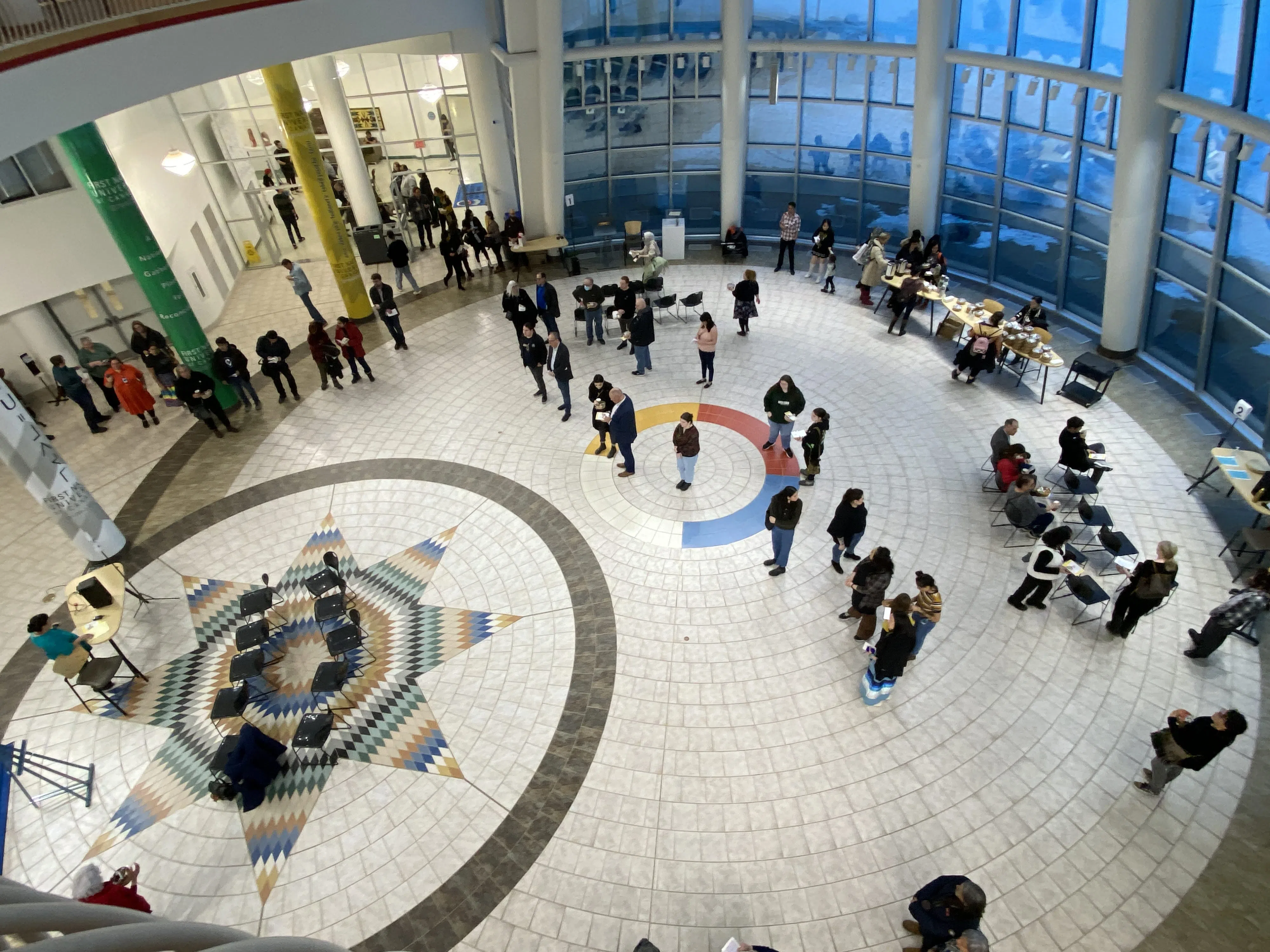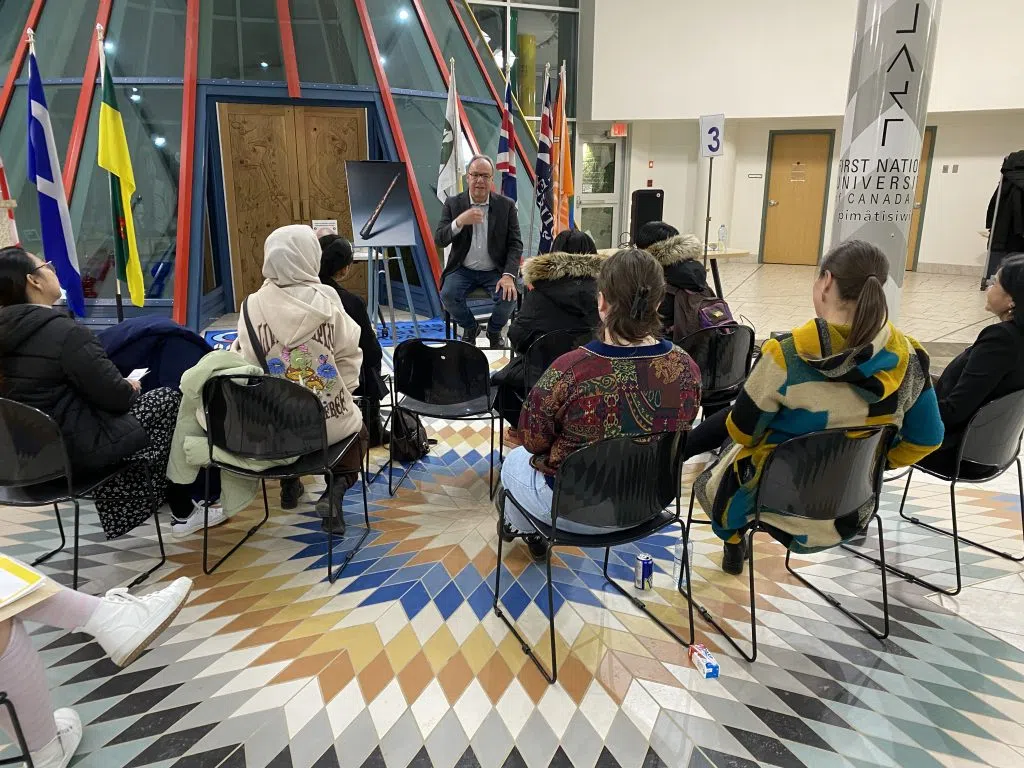
Artsy Fact or Artsy Fiction
Historically, art is often shrouded in mystery – where it came from, how it was made, or why it was made – but an annual First Nations University of Canada (FNUniv) event it’s all about embracing the mystery in the pursuit of education.
A few years ago, organizers decided to Indigenize the popular ‘Artifact/Artifiction’ event hosted by many museums across the country where stories are presented to participants who then must decrypt the fact from the fiction.
Thus was born the FNUniv’s Indigenous artsyFACT/artsyFICTION, which since its inception has been growing in popularity.
“It’s an educational event to teach the participants about Indigenous culture and history through the lens of fine art,” said Audrey Dreaver, assistant professor and program coordinator for Indigenous Fine Arts at FNUniv.
She sees it as an opportunity to both educate and entertain all those who haven’t studied art.
“Instead of using documents and books to teach art history, we’re using art objects, materials, and artworks,” she said.
The game is simple. Presenters will share a three to four minute story based on something that relates to Indigenous art or art history. Participants will then cast a vote whether they believe the story is fact or fiction. Those best at calling the bluffs will win prizes by Indigenous artists at the end of the night.

The stories are structured around three categories: ancient artworks, including the intellectual knowledge behind artistic creations; the materials and mediums used to create historic and traditional art, such as a bug used for colour dye; and finally, the artists and messages behind the art itself, which are often social, political, or connected to the land.
“This gives everyone the opportunity to participate in art,” said Dreaver.
“It helps to teach people about accurate Indigenous history by looking at the artwork that represents us and conveys are messages and beliefs,” she said. “We want to teach both non-Native people and our own people who we are.”
Past years of the event have been quite popular said, Dreaver. The presenters, or storytellers, have included local and Indigenous figures like Doug Cuthand, Nelson Bird, and former Eagle Feather News editor, John Lagimodiere.


